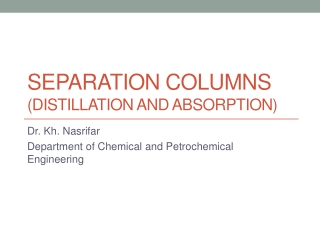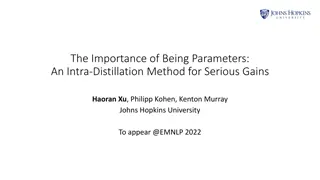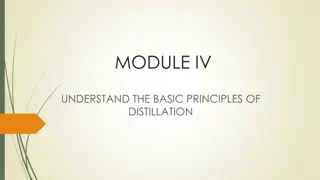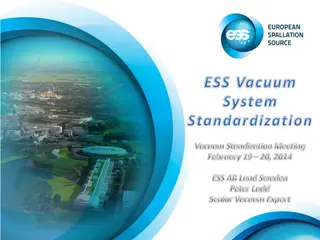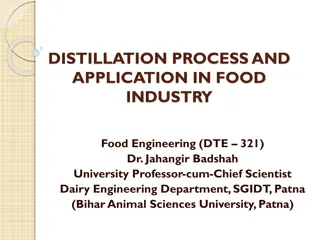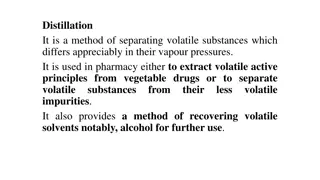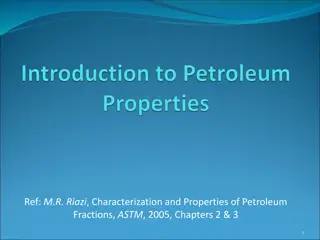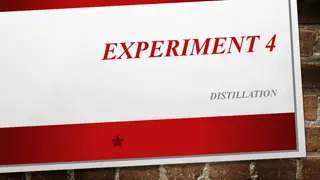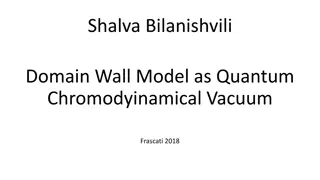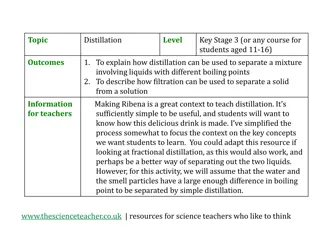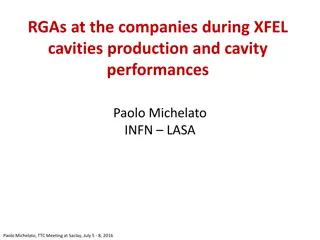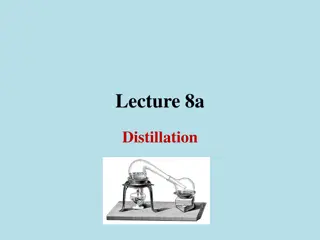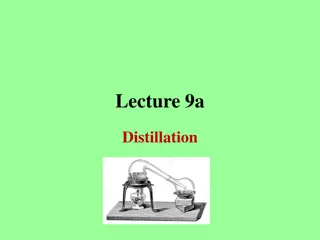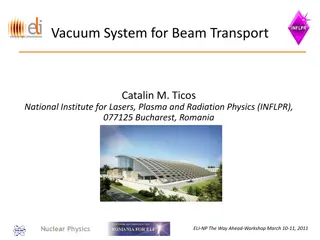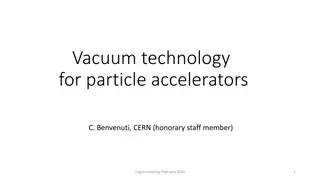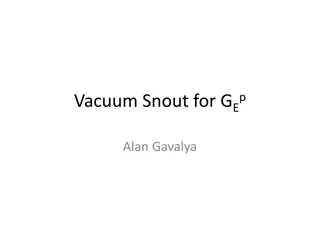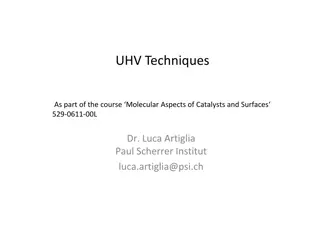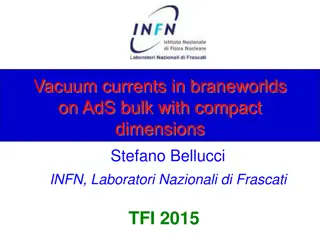Assembling of Apparatus in Vacuum Distillation
Apparatus assembly in vacuum distillation involves using a Claisen flask with thick-walled glass and interchangeable standard glass joints to prevent bumping. A capillary tube is utilized to prevent foaming, and molecular distillation is explained along with methods to prevent degradation of active constituents. Learn more about the process and equipment required for successful vacuum distillation.
Download Presentation

Please find below an Image/Link to download the presentation.
The content on the website is provided AS IS for your information and personal use only. It may not be sold, licensed, or shared on other websites without obtaining consent from the author.If you encounter any issues during the download, it is possible that the publisher has removed the file from their server.
You are allowed to download the files provided on this website for personal or commercial use, subject to the condition that they are used lawfully. All files are the property of their respective owners.
The content on the website is provided AS IS for your information and personal use only. It may not be sold, licensed, or shared on other websites without obtaining consent from the author.
E N D
Presentation Transcript
Dr. GarimaJoshi, Assistant Professor Pharmacy, MLSU III semUnit operation
Assembling of apparatus: It consists of a double-neck distillation flask known as Claisen flask . Thick walled glass apparatus with interchangeable standard glass joints are used for vacuum distillation. In one of the necks of the Claisenflask, a thermometer is fitted. The second neck prevents splashing of the violently agitated liquid. Bumping occurs readily during vacuum distillation. Placing a fine capillary tube in thesecond neck of the flask can prevent bumping
The capillary tube is dipped in the boiling liquid, so that a stream of air bubbles is drawn out. Water bath or oil bath is used for heating. The Claisen flask is connected to a receiver through a condenser. Vacuum pump is attached through an adapter to the receiver. A small pressure gauge (manometer) should be inserted between the pump and the receiver
Preventing degradation of active constituents ( 55 C) Enzymes -malt extract, pancreatin Vitamins -thiamine, ascorbic acid Glycosides - anthraquinones Alkaloids -hyocyamineto atropine
In vacuum distillation, persistent foaming occurs. This may be overcome by adding capryl alcohol to the liquid or by inserting a fine air capillary tube in the second neck of the Claisen flask. The stream of air is drawn in and breaks the rising foam. The above method is not suitable for the preparation of semisolid or solid extracts by distillation under vacuum.
It is defined as a distillation process in which each molecule in the vapour phase travels mean free path and gets condensed individually without intermolecular collisions on application of vacuum. Molecular distillation is based on the principle of the simple distillation with some modifications. This is also called Evaporation distillation or Short path distillation.
The substances to be distilled have very low vapour pressures. examples are viscous liquids, oils, greases, waxy materials and high molecular weight substances. These boil at very high temperature. In order to decrease the boiling point of the liquids, high vacuum must be applied. The pressure exerted by vapors above the liquid is much lower. At very low pressure, the distance between the evaporating surface and the condenser is approximately equal to the mean free path of the vapour molecules. Molecules leaving the surface of the liquid are more likely hit the condenser surface nearby. each molecule is condensed individually. the distillate is subsequently collected.
Molecular distillation is used for the purification and separation of chemicals of low vapourpressure. 1. Purification of chemicals such as tricresyl phosphate, dibutyl phthalate and dimethyl phthalate. 2. More frequently used in the refining of fixed oils. 3. Vitamin A is separated from fish liver oil. Vitamin's is concentrated by this method from fish liver oils and other vegetable oils. 4. Free fatty acids are distilled at 100 C. 5. Steroids can be obtained between 100 C and 200 C, 6. Triglycerides can be obtained from 200 C onwards. Proteins and gums will remain as nonvolatile residues. Thus, the above mixture can be separated by molecular distillation.
The evaporating surface must be close to the condensing surface. This ensures the molecules to come in contact with the condenser as soon as they leave the evaporating surface. For this reason, this process is also known as short path distillation. The molecular collisions should be minimized because they change the direction of the path of molecules. In other words, intermolecular distances should be fairly high. It can be achieved under very high vacuum, usually of the order of 0.1 to 1.0 pascals. The liquid surface area must be as large as possible as so that the vapour is evolved from the surface only, but not by boiling. Thus this process is also called evaporation distillation.
Principle: In this method, liquid feed is introduced into a vessel, which is rotated at very high speed (centrifugal action). On account of heating, vaporisation occurs from a film of liquid on the sides of the vessel. The vapour (molecules) travels a short distance and gets condensed on the adjacent condenser. Each molecule is condensed individually. The distillate is subsequently collected.
Construction: The vessel has a diameter of 1 m. The walls of the vessel are provided with suitable means of heating (jacket). Wipers are provided adjacent to the vessel wall. Wipers are connected to a rotating head through a rotor. The condensers are arranged very close to the wall (evaporating surface). Vacuum pump is connected to a large diameter pipe at the centre of the vessel. Provisions are made for collecting the distillate and the undistilled liquid residue at the bottom.
The vessel is heated by suitable means. Vacuum is applied at the centre of the vessel and wipers are allowed to rotate. The feed is entered through the inlet of the vessel. As the liquid flows down the walls, it is spread to form a film by PTFE (polytetrafluoroethylene) wipers, which are moving at a rate of 3 m per second. The velocity of the film is 1.5 m per second. Since the surface is already heated, the liquid film evaporates directly. The vapour(molecules) travels its mean free path and strikes the condenser. The condensate is collected into a vessel. The residue (undistilledor mean free path not travelled) is collected from the bottom of the vessel and re-circulated through the feed port for further distillation. Capacity is about 1000 L / hour.


